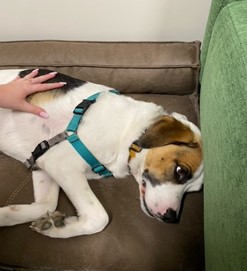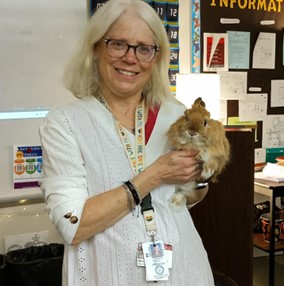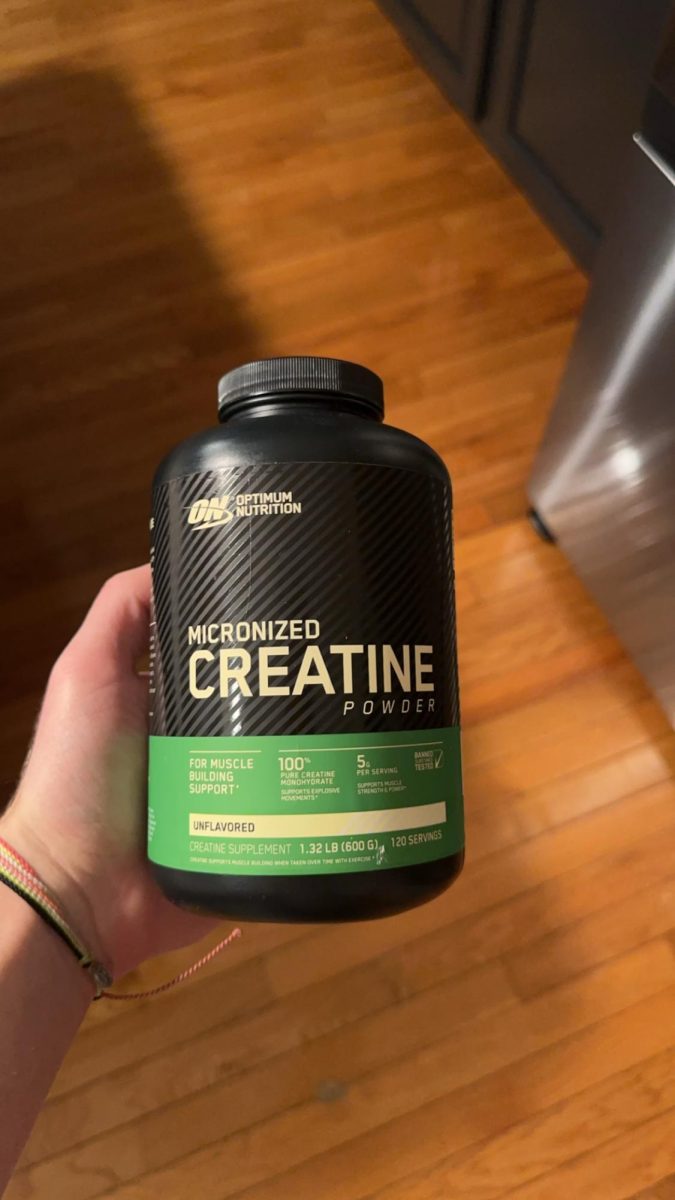Imagine walking into school, your eyes drooping with exhaustion and your mind longing for your warm bed, but luckily, a cuddly bunny and a furry dog are waiting for you at the entrance. Therapy animals positively impact school students and are vital to integrate into communities, as all schools could benefit from therapy animals. At Pennridge High School in Perkasie, Pennsylvania, Merlin, a Jersey Wooly rabbit, has benefitted the student body. He is an integral part of his home classroom and is often implemented into other teachers’ schedules to reduce students’ stress levels. By caring for Merlin, the students also learn and practice how to care for each other. This impact is also seen in Pennridge High School’s therapy dog, Kebo. He is a 5-year-old mutt who has been working with PHS for about four years. Students visit Kebo to pet and spend quality time with him, to calm down and find a source of joy.
Merlin is more than just a bunny. He provides friendship and companionship for students who may struggle with social skills or need a little bit of love. “Merlin is great for stress relief” Sharon Fusco, Merlin’s main caretaker, stated. “However, he also brings out empathy and kindness in people. Students who do not have many friends or contacts at school have unconditional love from Merlin.” Students all around Pennridge can talk to him, and he’ll never judge them. Some of the greatest services he provides are simply listening to students as they whisper to him and providing a source of entertainment and happiness in the middle of the stress and anxiety of school and friendships with his goofy antics. Fusco explained, “I often have students who are talking quietly to Merlin- I think he helps to provide the service of being there to listen.” Merlin offers a sense of comfort that kids often crave, especially those dealing with the hardships of high school, and it would be highly beneficial for more animals such as Merlin to be at different schools. The implementation of this can help lead to a more pet-friendly learning environment.
Kebo, the lovable, friendly therapy dog who roams Pennridge High School’s halls twice a week, brings joy to students and staff alike. His handler, Jennifer Pennebacker, says that this is one of the best parts of Kebo’s role at Pennridge. “I’ve had students say he’s the reason why they come to school.” She went on to explain, “He makes their day.” However, making sure that Kebo was allowed to come to Pennridge required several steps. Therapy dogs like Kebo have to go through obedience training and pass the AKC Canine Good Citizenship Test. They must also take a test specifically for therapy dogs and do several supervised visits as therapy dogs. After this, they’re officially certified as therapy dogs. Though this might seem intimidating at first, the outcome is worth it. Pennebacker advises other guidance counselors looking to implement a therapy dog in their schools to “work with their administration on what that may look like.”
While loveable and calming, all therapy animals are trained for precise obedience. Then, they undergo training specific to their jobs, which leads to their certification and success in helping people. This ensures all therapy animals are well-behaved and properly trained to execute what is needed. An example of this is emotional support animals who efficiently sense stress detected by raised hormone cortisol levels. People with these animals enjoy talking to others about their service animals, creating a welcoming environment to communicate their experiences, and teaching others about their impacts. Different breeds and animals have certain qualities that are needed for all types of situations. Whether it’s a bunny or a dog, therapy animals bring positive effects to students, and the expansion of them in the community is important.






